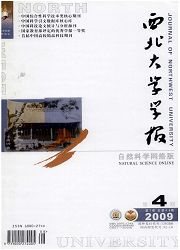

 中文摘要:
中文摘要:
目的研究陕北黄土高原土地利用时空变化。方法选用数据源为1990,2002年landsat-7ETM影像,辅以陕北黄土高原地区土地利用类型图、土壤植被分布图、自然地理基础资料和野外样点调查资料,研究对比不同时期陕北黄土高原土地利用状况。计算出土地利用变化的转移矩阵。结果1990—2002年10余年内,陕北黄土高原地区土地利用类型变化最大的是园地,其次是交通用地和耕地,年变化率分别为20.48%,1.94%,-1.57%,再次是居民点及工矿用地、未利用地、林地,水域变化率最小仅0.13%。结论1990—2002年期间,研究区通过水土流失综合治理,使难利用地和沙地等土地利用类型转化为有利于改善区域生态环境的林地和草地等。陕北黄土高原水土流失综合治理中种植沙棘等水土保持林地的造林措施效果显著。
 英文摘要:
英文摘要:
Aim To study the spatial-temporal changes of land-use in loess plateau in northern Shaanxi Province.Methods Based on the ETM image of 1990,2002,land-use type map,soil-vegetation distribution map of loess plateau,physical geography document and sample field survey,land-use on loess plateau is studied,matrix of land-use types diversion is gave out.Results In the past 10 years,garden changed fastest,communication-land and farmland changed secondly,annual rate of each of them are 20.48% 1.94%~1.57%.water area changed slowly annual rate is only 0.13%.Conclusion From 1990 to 2002,by synthetically administer barren land and sand have changed into woodland and grassland.It is showed that cultivated grass and tree planting have a prominent distinction on improving ecological environment.
 同期刊论文项目
同期刊论文项目
 同项目期刊论文
同项目期刊论文
 期刊信息
期刊信息
